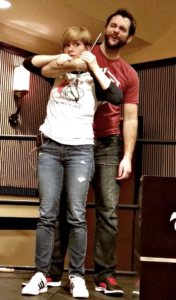
Before our manuscript makes it to the shelf, it should go through an editor. I cannot stress this enough. Editors are able to see not only errors in your work but opportunities as well. They make your work the best it can be while still allowing it to be your work. And I highly-er (I’m making that a word) suggest you get an editor’s perspective on your fight scenes.
I thought it would be nice to have a professional editor talk about what he looks for in fight scenes. Without further ado, I give you my colleague, friend and favorite sparring dummy, Ben Wolf.
I’m Ben Wolf. I’ve been writing and editing professionally for more than a decade. I’ve got 15-ish books published (or soon-to-be), and I’ve edited hundreds of books, stories, and manuscripts for authors.
Like our esteemed FightWriter Carla, I practice Brazilian jiu jitsu and have done my fair share of MMA training as well. She was kind enough (read: delusional enough) to let me take over her blog for a post, so here I am, filling your minds with all sorts of editorial trickery.
An Editor’s Perspective on Fight Scenes
Today, I’m going to give you an Editor’s Perspective on Fight Scenes.
Whenever I edit any project, I try to keep three focuses in mind. I call them the three Cs of editing: Clarity, Conciseness, and Color (a.k.a. Clear, Concise, and Colorful). Blocking Pacing
3 Cs
Clarity means I’m asking myself if what I’m reading makes sense.
Conciseness means I’m asking myself if the writing is too wordy.
Color means I’m asking whether or not the writing has an appropriate artistic flourish to it.
It’s never as cut-and-dry as that, of course, and there’s a lot of room for interpretation on what those elements mean when it comes to editing someone’s work (or editing your own, for that matter). But this basic hierarchy can be helpful to keep in mind when authors are self-editing or even writing fight scenes in their stories.
Hierarchy of the 3 Cs
Yes, it’s a hierarchy. That means that these elements have different levels of importance for the reader. Generally speaking, Clarity is more important than Conciseness, and Conciseness is more important than Color.
Don’t get me wrong—they’re ALL important, but they’re ranked that way for a reason.
If I can’t understand what you’re saying, it doesn’t matter how concisely or colorfully you say it. Likewise, if you’re clear, but it takes you forever to get to the point, you’ve also likely lost my interest. And if you totally lack any sense of artistry, personality, or flavor, I’m gonna be staring at my phone instead of paying attention to you.
If you’re colorful but don’t make any sense, you’ve lost me. If you’re to-the-point, but your point is nonsense, you’ve lost me.
By now, you should be able to see how these three Cs interplay with each other. So how does this apply to fight scenes?
Applying the three Cs to your fight scene
This is where the blog post gets interactive. Pull out any of your recent fight scenes. We’ll go through this together.
As you’re reading through your fight scene, take it through that hierarchy by asking these questions every line.Yes, I do mean EVERY line.
- Ask yourself, “Is this Clear?”
If it’s not clear, make it clear. (Don’t worry about being too wordy or colorful at this point. You can layer in or revise those elements later on.) Once that line is clear, and what you’ve written accurately matches the picture in your head, we can move on.
- Ask yourself, “Is this Concise?” (Reminder: We’re still on the same line. Don’t jump ahead.)
Look at what you wrote and/or just revised. Is there a more succinct way to say it? Something punchy (pun intended) that strikes to the heart (also pun intended) of the matter? Can you make it more concise without losing any of the clarity you’ve just worked so hard to achieve?
Making things colorful
Once that’s done, we can move on.
- Ask yourself, “Is this Colorful?”
Now that your line is clear and concise, ask yourself if it has enough color to it. Say, for example, you ended up with something like this: “Bob punched Jim, and blood came out of his nose.” It’s clear and concise, but it’s as bland as your stepfather’s cooking (just order out, already, Dave!). You’ve got good lines, though, so color within them.
“Bob drove his fist into Jim’s face, and a river of crimson poured from his nose.”
What did I change?
- “punched” became “drove his fist” (same meaning, more dynamic wording)
- “blood” became “a river of crimson” (artistic (but still clear) interpretation of blood. Yes, it’s longer, but only a little, and it’s more fun to read)
- “came out of” became “poured from” (same meaning, more evocative verb use)
What did I NOT change?
- “Bob” and “Jim” remained the same. (I didn’t refer to Bob as “the disgruntled mutated postman” or whatever he is. I used his name. Most of the time, just stick with the character’s name.)
- “his nose” remained the same. (I didn’t try to come up with some artistic moniker for “nose.” I felt it would’ve cluttered an already colorful sentence too much.
- The sentence conveys the same meaning, in the same order. (I didn’t have to mess with the structure or the order of events, and I didn’t have to re-conceive the sequence of actions as something other than what I’d first intended.
Had I made some of those other changes, they would’ve unbalanced the hierarchy of the three Cs in this one line. Perhaps they might’ve added more color, but it would’ve come at the cost of being clear and concise.
Final thoughts
Maybe you don’t like this sort of formulaic approach to your writing. If that’s the case, that’s fine. After all, this is just one editor’s perspective on fight scenes and writing is a different process than editing. Editing functions sort of like a translation or preparation of the art for the consumer (reader), and that often entails a more technical/structured/procedural mindset rather than a creative one.
Another bit of advice I’d share is that if you DO follow this process, it helps to ensure success on both the micro (line-by-line) level as well as on the macro (the entire fight scene will improve because every line will be Clear, Concise, and Colorful).
And if you’re in need of some help with your writing, specifically as it pertains to creating and keeping track of your story world, check out my book Power Author: A Quick Guide to Building Your Story Bible.
Keep fighting, and keep writing!





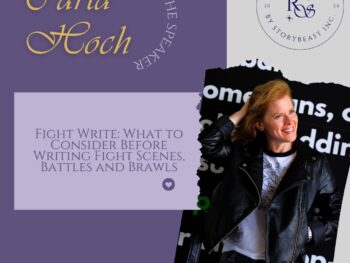
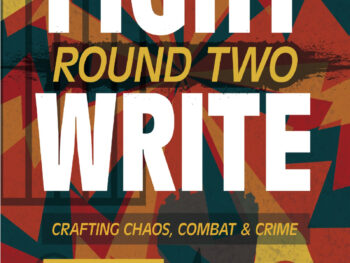
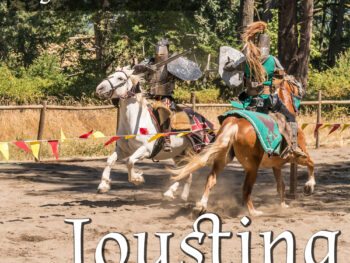


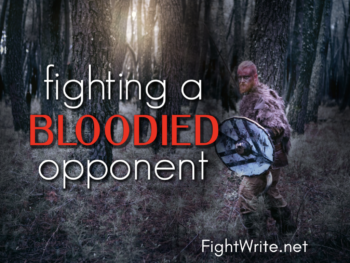
Great overview! The 3 C’s really help.
On keeping the fight scene characters’ names (Jim and Bob), I totally agree. Action scenes get confusing very quickly when we read them.
I read a book that also recommended naming unknown characters in a fight scene, as often happens with an ambush by random thugs. The author said to let the hero observe a distinctive feature or trait in the baddie, then summarize it in a name you give them. (Ex.: the big-shouldered man with the bruised forehead charged at her. She dodged Bruise easily as the tall man with the overbite rushed forward. She spun to deliver a savage kick to Fang’s midsection …) I’ve used this to create a clearer picture of who’s fighting and where they are when scenes get crowded.
Ben really is a great resource! I’m glad this helped you out.
Our platform offers a large assortment of home wall clocks for any space.
You can check out urban and traditional styles to fit your interior.
Each piece is chosen for its design quality and accuracy.
Whether you’re decorating a stylish living room, there’s always a matching clock waiting for you.
best lorell round black wall clocks
Our assortment is regularly expanded with new arrivals.
We focus on secure delivery, so your order is always in good care.
Start your journey to timeless elegance with just a few clicks.